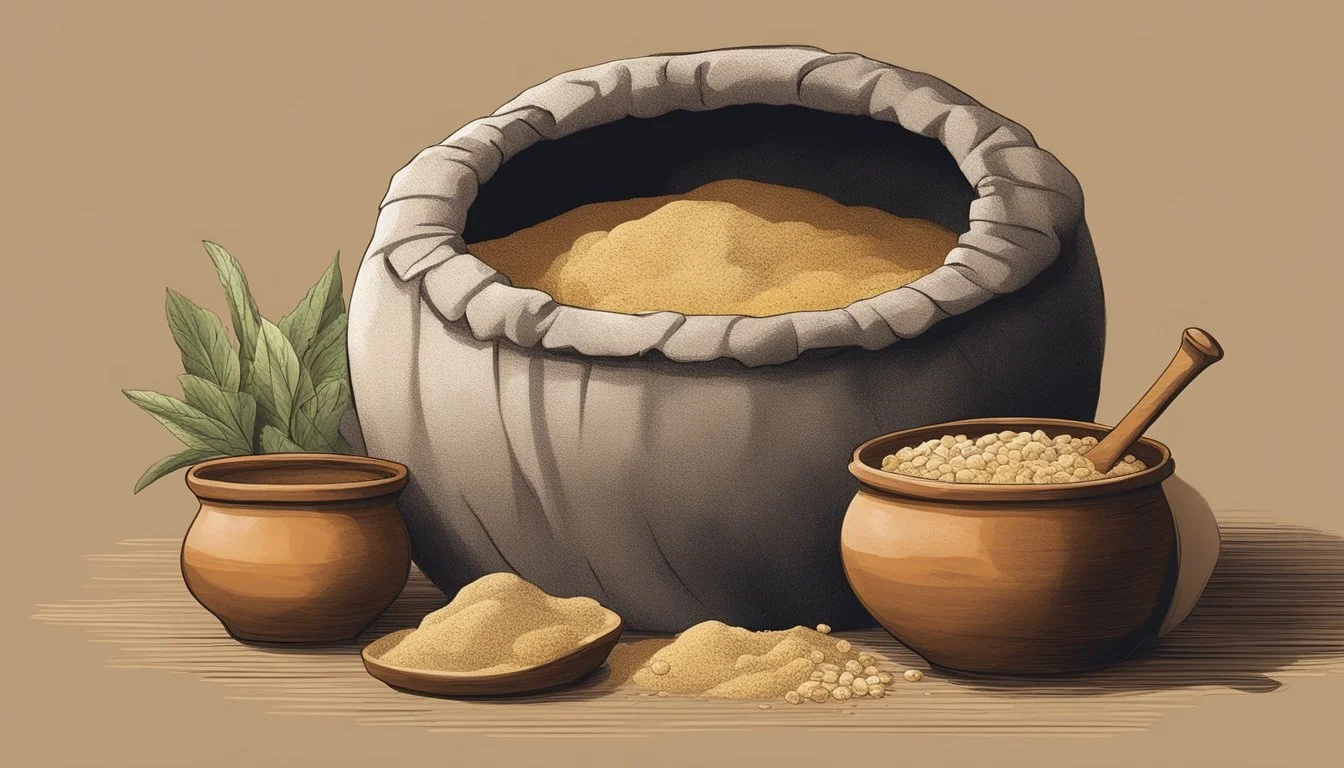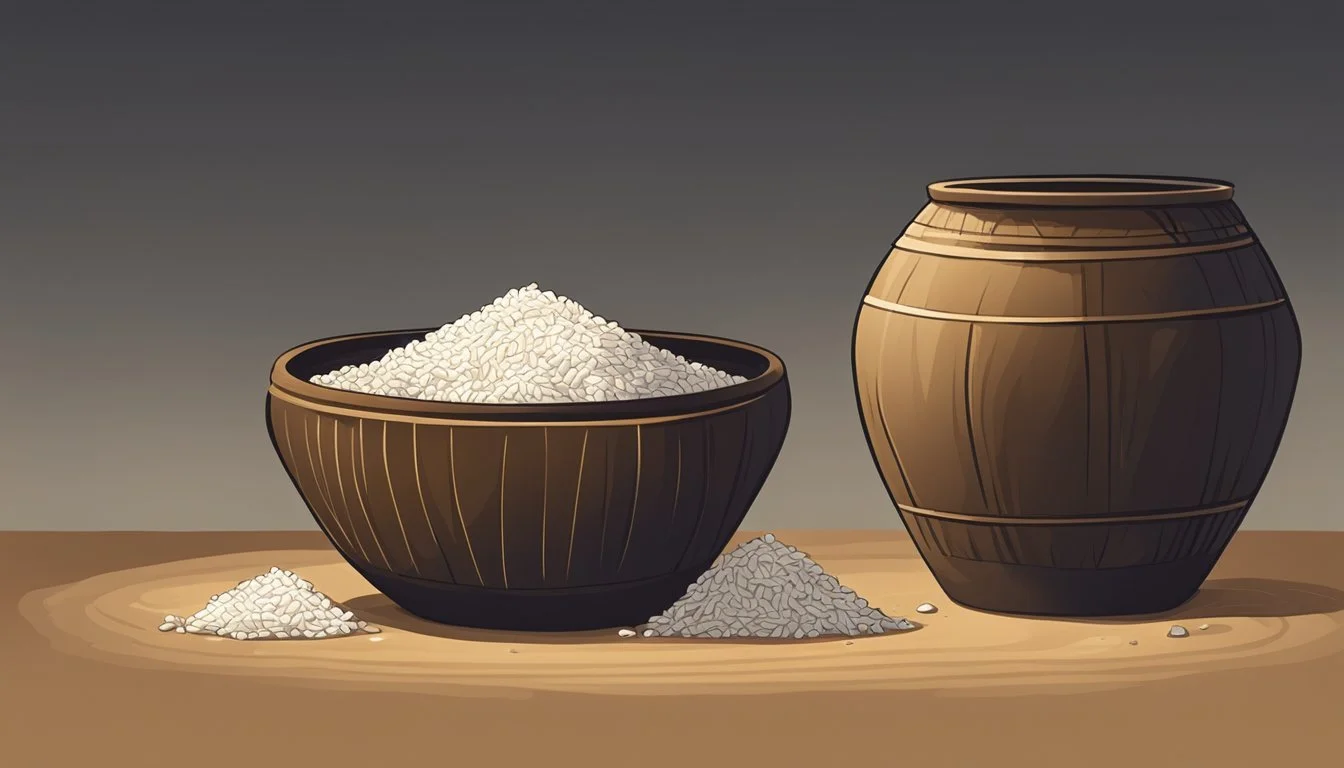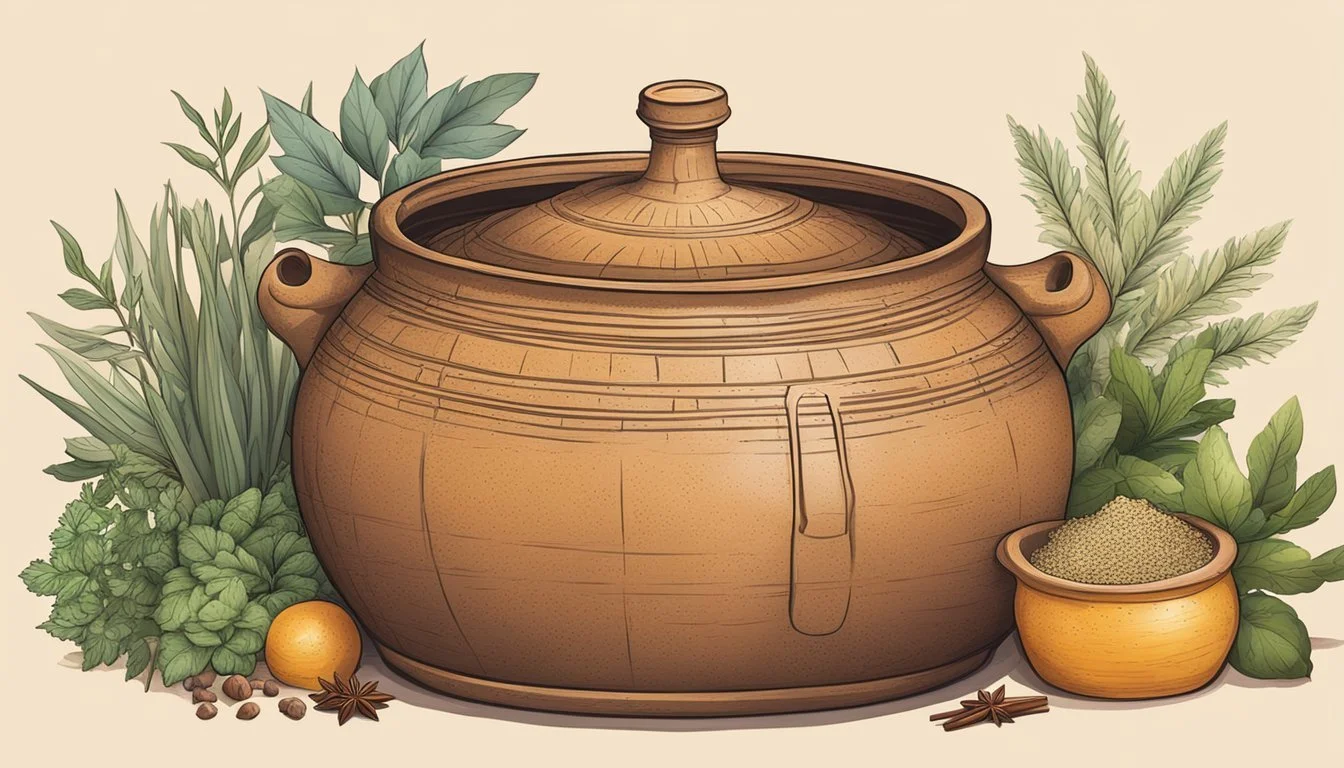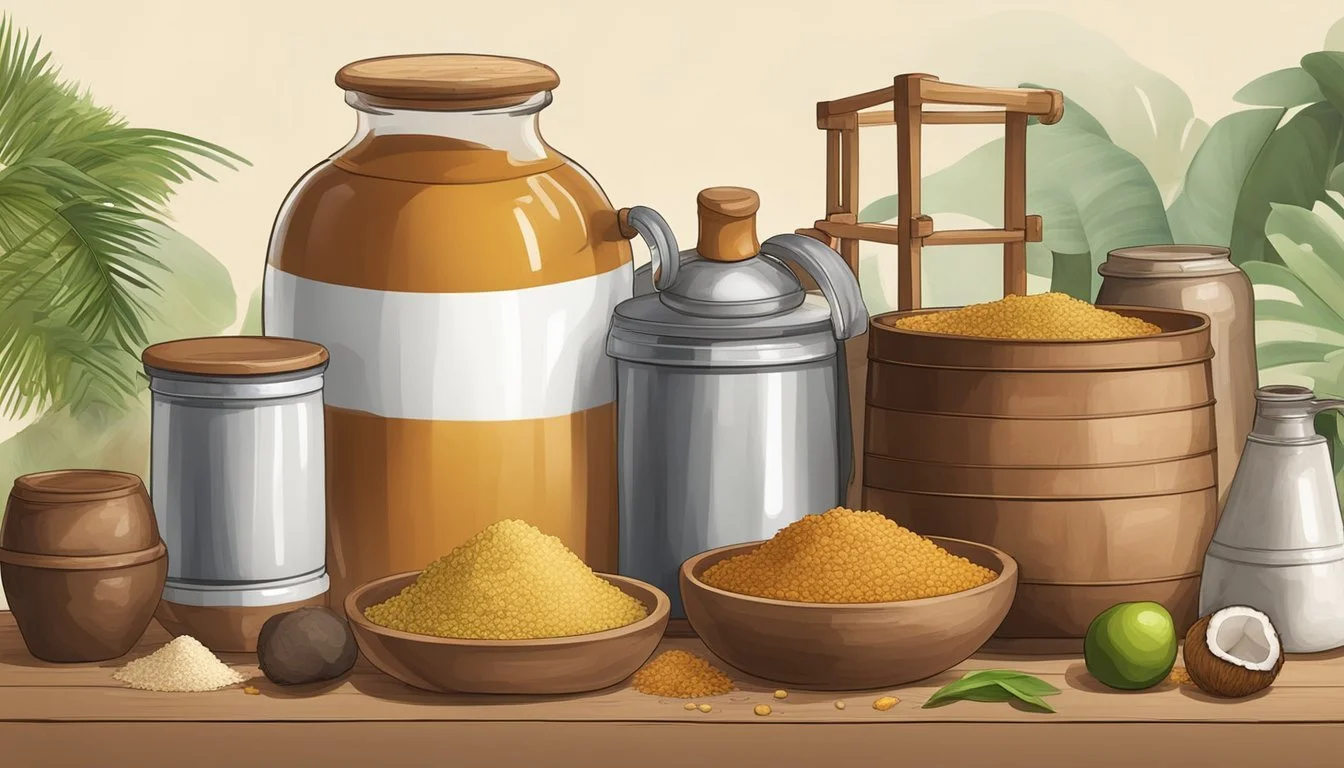How to Ferment Arrack
Mastering the Art of Traditional South Asian Spirit Making
Arrack is a traditional spirit deeply rooted in South Asian and Southeast Asian culture, boasting a rich history of production and consumption. This distilled alcoholic beverage varies in composition and preparation methods depending on the region, but it primarily involves the fermentation of ingredients such as coconut flower sap, sugarcane, grains, or fruit. In some areas, the distillation process of arrack also incorporates the aging in wooden barrels, or repeated distilling and filtering to achieve the desired flavor profile and clarity.
The process of creating arrack begins with the careful selection and fermentation of the base ingredients. This foundational step is crucial, as it sets the stage for the quality and character of the final product. The fermentation period, which allows the natural sugars to convert into alcohol, can differ based on regional practices and the specific raw materials used. Mastery of these initial stages is a testament to the skill and knowledge passed down through generations of arrack producers.
Once fermentation is complete, the liquid is distilled to increase its purity and alcohol content. The art of distillation requires precision and attention to detail, ensuring that the arrack achieves its unique qualities that distinguish it from other liquors. Southeast Asian and South Asian arrack should not be confused with the Middle Eastern spirit 'arak', which is anise-flavored. The resulting beverage from this intricate process provides a smooth, robust spirit that encapsulates the essence of its geographical and cultural origins.
History and Cultural Significance
The history of Arrack, a distilled alcoholic beverage, is deeply embedded within the fabric of South Asian and Southeast Asian societies, marking its significance from ancient rituals to modern-day celebrations.
Origins in Ancient Times
Arrack is believed to have ancient origins, with early distillation methods traced back to India and Sri Lanka, formerly known as Ceylon. It's thought that the process of creating Arrack was developed over a thousand years ago, indicating a long-standing tradition in human civilization. The communities in these regions utilized local resources, like coconut flowers and sugarcane, to brew this potent spirit.
Arrack in South and Southeast Asian Cultures
In South and Southeast Asia, Arrack holds a special place in the hearts of the communities. It's deeply intertwined with the cultural heritage of countries like India, Sri Lanka, Indonesia, the Philippines, and Malaysia. Often consumed during festivals, weddings, and other social gatherings, Arrack has become synonymous with celebration and hospitality in these cultures.
India: Arrack is part of social and religious customs.
Sri Lanka: Here, Arrack is a traditional offering in rituals.
Indonesia: Known for producing Batavia Arrack, a specific type with a unique flavor profile.
Philippines and Malaysia: Local varieties play a role in community bonding and traditional events.
Global Influence and Current Trends
Initially confined to the regions of its origin, Arrack has now gained global attention. The influence of historical trade routes, specifically with the Middle East, facilitated the spread of Arrack’s popularity. In contemporary times, Arrack has spread beyond its traditional frontiers, influencing global spirit markets and featuring in international cocktail recipes. The current trend shows a renaissance of interest in traditional spirits, and Arrack is receiving renewed appreciation for its distinct flavor and heritage.
Types of Arrack
Arrack is a diverse spirit with variations that stem from the main ingredient used during fermentation and distillation. Each type demonstrates unique flavors influenced by its source and regional production methods.
Coconut Arrack
Coconut arrack, primarily found in Sri Lanka, is distilled from the fermented sap of coconut flowers. It may also be referred to as Ceylon arrack and is considered a traditional alcoholic beverage in the region. Unlike rum which is made from sugarcane byproducts, coconut arrack directly utilizes sap, giving it a distinct flavor profile.
Palm Arrack
This version of arrack is made from the sap of various types of palm trees, including date palms and sugar palms. The sap is collected and fermented to produce a drink known as palm wine, which is then distilled into palm arrack. This method is prevalent in various parts of Southeast Asia and has its own regional names and variations.
Grain-Based Arrack
Grain-based arrack is created using different grains, with red rice being a common ingredient. This type of arrack offers a variety of flavors depending on the grain used and the distillation process. Batavia arrack, which originated from Java in Indonesia, is a well-known variety that utilizes red rice and sugarcane molasses in its production. It is often used in mixology for its unique taste.
Ingredients and Fermentation Basics
In the production of arrack, a South Asian and Southeast Asian spirit, the selection of quality ingredients and a clear understanding of the fermentation process are crucial. This section discusses the essential components required and the fundamental concepts that underpin the fermentation stage.
Key Ingredients
Sugar Sources: Arrack can be made from a variety of sugar-rich ingredients. Common options include:
Sugarcane: Its juice acts as a primary fermentable sugar.
Coconut Sugar: Derived from the sap of coconut flowers, it provides a distinct flavor.
Cooked Rice: Often used in grain-based arrack, providing both sugar and a unique character to the spirit.
These ingredients not only contribute to the alcohol content but also impact the final taste profile of the arrack.
Understanding Fermentation
Fermentation Process: This crucial step involves:
Converting sugars (from sugarcane or coconut sugar) into alcohol through the action of yeast.
A possible secondary fermentation where lactic acid bacteria contribute to the development of complex flavors and help stabilize the product.
Micro-flora Composition: The types of yeast and bacteria responsible for fermentation are collectively known as micro-flora. They play a pivotal role in shaping the arrack’s flavor and can impart probiotic qualities.
Environment: Fermentation is a carefully controlled process that should occur in an environment with ideal temperature and pH levels, ensuring the optimal activity of fermenting agents.
Properly managed, these ingredients and processes come together to create arrack, a spirit celebrated for its distinct taste and cultural significance in its regions of origin.
Fermentation Process
The fermentation of arrack involves microbial processes that transform the biomass into an alcoholic beverage rich in flavor and cultural history. Throughout each stage of fermentation, careful monitoring ensures the development of the intended profile of arrack.
Preparation of the Wash
Before fermentation can start, the raw ingredients must be prepared as a wash. The wash usually comprises a combination of coconut flower sap, sugarcane, fruit, or grains, depending on the regional recipe. These ingredients contain the necessary sugars for fermentation. Preparation includes ensuring that the wash is free of contaminants, as they can influence microbial growth and enzyme activity adversely.
Fermentation Stages
Once the wash is prepared, the fermentation process begins.
Inoculation: Specific strains of yeast and sometimes bacteria, such as Lactobacillus or Bacillus species, are introduced to the wash. These microorganisms are responsible for producing lactic acid, alcohol, and other compounds through the fermentation process.
Active Fermentation: During this stage, the microbes convert sugars in the biomass to alcohol and other metabolic byproducts like enzymes. Monitoring the temperature and pH levels is crucial, as they greatly affect the rate of microbial growth and the quality of the end product.
Maturation: After active fermentation, the mixture undergoes a maturation period, where the flavors develop further, and unwanted byproducts are removed or reduced.
Harvesting and Storage
Once fermentation is complete, the arrack is harvested from the wash.
Distillation: The liquid is distilled to separate the alcohol from the rest of the ferment, concentrating the arrack and enhancing its flavor and protein profile.
Storage: The distilled arrack is then stored, often in wooden barrels, to age. This aging process can significantly improve its nutritional value and flavor complexity.
The traditional fermentation of arrack exemplifies a sustainable future in beverage production, harnessing natural microbial processes to create a drink that is both culturally significant and nutritionally enriched.
Distillation and Aging
The transformation of fermented liquid into arrack, a distilled spirit, and its enhancement through aging are critical stages in producing a high-quality alcoholic drink. These processes not only elevate the spirit's purity and flavor profile but also contribute to the development of value-added products within the realms of mixology and food quality.
Distillation Techniques
The process of distillation for arrack begins with the fermented liquid being placed in distillation apparatus, such as pot stills or reflux stills. Pot stills are widely used for their ability to impart a rich flavor profile to the spirit:
Fermented liquid is heated until alcohol vapors form.
Vapors rise through the still and enter a condenser.
The condenser cools the vapors back into liquid form.
Reflux stills, on the other hand, allow for a higher degree of purification by allowing the vapors to condense and re-vaporize multiple times before final condensation:
Vapors ascend through a column packed with materials that cause condensation.
As vapors condense, they re-vaporize, creating a cycle that purifies the alcohol.
The resulting spirit has a higher alcohol content and a cleaner production quality.
During these processes, certain distilleries may use traditional halmilla vats, which are known for their durability and contribution to the distinct taste and quality of the spirit.
Aging Process and Maturation
Once distilled, the arrack must undergo aging to reach maturity, typically in wooden barrels. This period allows the spirit to acquire flavors from the wood and to mellow out any harshness:
Aging duration varies, ranging from a few months to several years.
The choice of wood, such as oak, can introduce vanilla, caramel, and other aromatic compounds.
Through aging, the once clear distilled spirit develops complexity, depth, and a nuanced palette, essential for crafting high-quality arrack that appeals to enthusiasts of traditional South Asian and Southeast Asian spirits.
Quality and Varieties
When discussing the quality and varieties of arrack, two major factors come into play: the established rating and standards that help consumers discern quality and the regional varieties, which are characterized by unique local production methods and ingredient profiles.
Rating and Standards
Rating systems for arrack can vary by region, but typically they assess aspects like purity, flavor, and aging. For example, Ceylon arrack from Sri Lanka is renowned for its quality and is often rated based on its smoothness and subtle sweetness, attributable to its aging process in wood. This traditional South Asian spirit is monitored by local regulatory bodies that ensure these quality standards are met.
Regional Varieties and Their Unique Characteristics
Within this diverse category of spirits, regional varieties stand out based on their distinct fermentation sources and methodologies.
Ceylon Arrack: Distilled from the sap of the coconut palm flower, it is aged to achieve a golden color and a balanced taste.
Batavia Arrack: Originating from Indonesia, particularly Java, it is made primarily from sugarcane and red rice, which contribute to its potent flavor.
Beyond South Asia, Batavia arrack influenced the spirits industry in East Asia and had historical trade significance with China, where arrack was once a valuable commodity.
Each variety reflects the cultural and agricultural influences of its region, presenting a spectrum of flavors for enthusiasts and connoisseurs to explore.
Health and Nutrition Aspects
When considering the health and nutrition aspects of arrack, it is important to focus on the macro-nutritional content and the digestive health implications of consuming this fermented beverage. Distillation and fermentation techniques can impact the final nutritional composition of arrack.
Macro-Nutrition
Arrack, like other alcoholic beverages, primarily provides calories from alcohol (ethanol). It contains negligible amounts of proteins, fats, and carbohydrates. The caloric content is relatively high due to the alcohol content, which has about 7 calories per gram. Since nutritional composition can vary based on the ingredients and fermentation process, it is essential to consider that traditional homemade arrack might differ from commercially produced options.
The beverage does not typically serve as a significant source of vitamins and minerals, and the presence of any antioxidants would likely be minimal. However, when produced with ingredients like palm sap, slight variations in the mineral content might occur, although these are not usually substantial.
Impact on Digestive Health
Fermented foods, in general, can be beneficial for digestive health due to the presence of probiotics. Probiotics are live microorganisms that, when administered in adequate amounts, confer a health benefit on the host. The process of fermenting arrack involves various strains of bacteria, including those that can produce lactic acid. Lactic acid bacteria are known for their probiotic potential; however, the distillation process required to produce arrack generally eliminates these bacteria, meaning arrack does not serve as a probiotic.
While the fermentation process of arrack may involve beneficial bacteria, it's important to note that excessive consumption of alcoholic beverages can be detrimental to digestive health, potentially disrupting the gut microbiota and causing health issues. As such, the healthful aspects of fermentation do not directly translate to arrack, given its alcohol content and production methods.
Culinary Uses
Arrack, a distilled spirit primarily produced in South Asia and Southeast Asia, is revered for its versatility in culinary applications. It serves as a flavorful base for a variety of dishes and beverages, capitalizing on its unique taste derived from fermented rice, fruits, or sugars.
Arrack in Cooking
In cooking, Arrack is often employed as an aromatic enhancer, much like how one might use wine in Western dishes. Chefs may incorporate it into sauces and marinades, using its alcoholic properties to tenderize meats such as seafood. Infused with spices, Arrack can introduce notes of warmth and complexity to Southeast Asian foods. It's frequently used as a component in rich, spicy condiments, complementing the region's love for deeply flavored and layered cuisines.
Example Sauce: Arrack, soy sauce, garlic, ginger, and a hint of brown sugar.
Cocktails and Mixers
Arrack shines in the beverage realm as a base for cocktails and mixers. It's most famously known for its role in the classic punch, blending with ingredients like citrus, sugar, and water to highlight its multifaceted profile. Bartenders often mix Arrack with fruit juices or soft drinks, using its robust flavor to create sophisticated, tropical-inspired drinks that evoke the spirit's origins.
Classic Cocktail: Arrack punch with lime juice, simple syrup, and a touch of nutmeg.
Production and Environmental Considerations
The production methods of Arrack influence its environmental footprint, with greener practices contributing towards a sustainable future. Different modes of production offer varying benefits and considerations in terms of biomass conversion and the role of cottage industries.
Traditional vs. Commercial Production
Traditional production of Arrack typically involves small-scale, cottage industry setups. These methods rely heavily on local biomass, like coconut flowers or rice, and age-old fermentation techniques. Such practices have a lower energy consumption profile and are more reliant on manual labor:
Utilization of local ingredients reduces the carbon footprint associated with transportation.
Manual processes support local economies and maintain traditional skills.
In contrast, Commercial production methods of Arrack can be vastly different:
They may employ modern technologies to increase yield and efficiency.
Larger scale production can lead to homogenization of flavors but may also strive for cleaner production with controlled fermentation environments.
Environmental Impact and Sustainability
Addressing the environmental impact includes considering the sustainability of the materials and methods used in Arrack production:
Green conversion practices, which convert natural biomass into valuable products with minimal waste, are crucial for eco-friendly production.
Sustainable sourcing of ingredients is another important facet, ensuring that the biomass is renewable and does not deplete natural resources.
Sustainability efforts in Arrack production can include:
The adoption of sustainable farming practices for the raw materials like rice or other grains, ensuring that production does not lead to soil depletion.
Implementing energy-efficient distillation and cleaner production processes to minimize environmental pollution.
The future of Arrack production may see an increased emphasis on ecological practices and supporting local cottage industries to reduce carbon footprints and promote a cleaner, more sustainable future for the spirit industry.
Legal and Regulatory Framework
When producing arrack, a traditional spirit in South Asia and Southeast Asia, it is crucial to adhere to the legal and regulatory frameworks of the respective countries. These regulations primarily focus on manufacturing licensing, taxation, and export controls that ensure product quality and legal compliance in international trade.
Production Licenses and Taxes
India: In India, the production of arrack requires a manufacturing license, which is governed by state laws due to the State Excise Duties. Producers must comply with the specific regulations of their state, including taxation policies which can vary considerably.
Sri Lanka: Known for its coconut arrack, Sri Lanka mandates producers to acquire a distillation license and adhere to the Excise Ordinance. Taxation in Sri Lanka includes excise taxes and VAT based on the alcohol content and volume of the spirit produced.
Indonesia: In Indonesia, particularly in Bali where arrack is commonly produced, government permits are required for production. Taxation includes excise duties and may differ based on whether the arrack is for domestic consumption or for export.
Malaysia: Malaysian authorities require a license for the manufacture of spirits. This involves stringent application processes and adherence to the Customs Act 1967. Taxes are levied in the form of excise duty and sales tax.
Philippines: The Philippines' regulation on spirit production also requires obtaining a license, with taxes imposed under the National Internal Revenue Code. Depending on the type of arrack and its production scale, various taxation rates apply.
Export Regulations and Global Market Access
India: Indian-made arrack is subject to export duties and compliance with the Food Safety and Standards Authority of India (FSSAI) for quality standards before it is allowed in the global market.
Sri Lanka: Sri Lankan arrack exporters must meet the standards set by the Sri Lanka Standards Institution (SLSI) and comply with bilateral and multilateral trade agreements to access global markets.
Indonesia: Indonesian producers looking to export must comply with the National Agency of Drug and Food Control regulations. They are also subject to international trade laws when entering foreign markets.
Malaysia: In Malaysia, exporters of arrack are regulated under the Malaysia External Trade Development Corporation (MATRADE), ensuring the adherence to international standards. This is crucial for global market entry and acceptance.
Philippines: Philippine arrack producers must adhere to the Bureau of Customs' regulations and ensure compliance with the Food and Drug Administration (FDA) for export certification. This ensures the quality of arrack that reaches global consumers.










